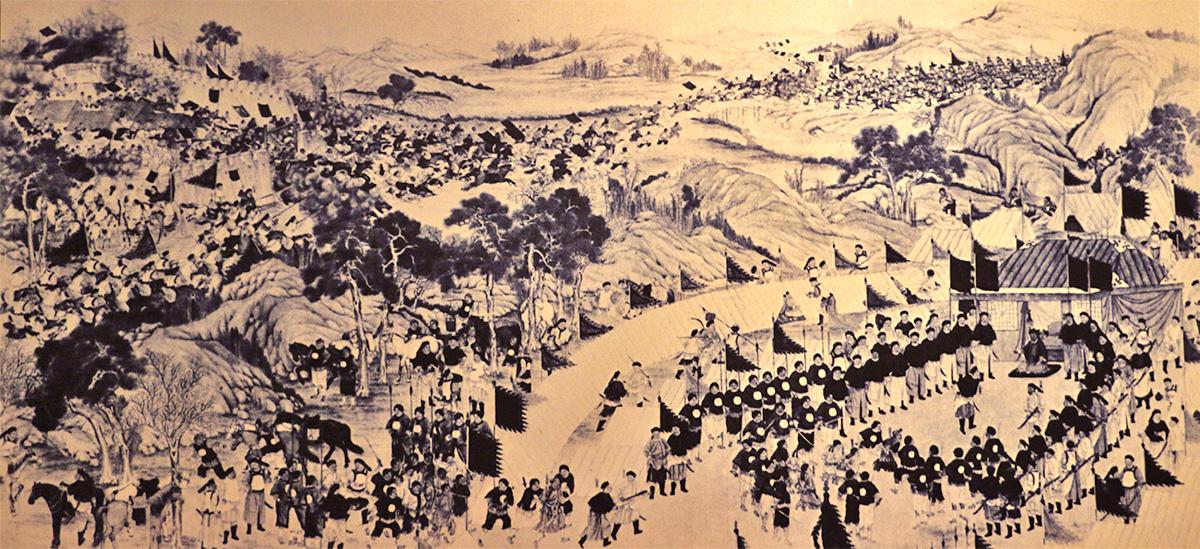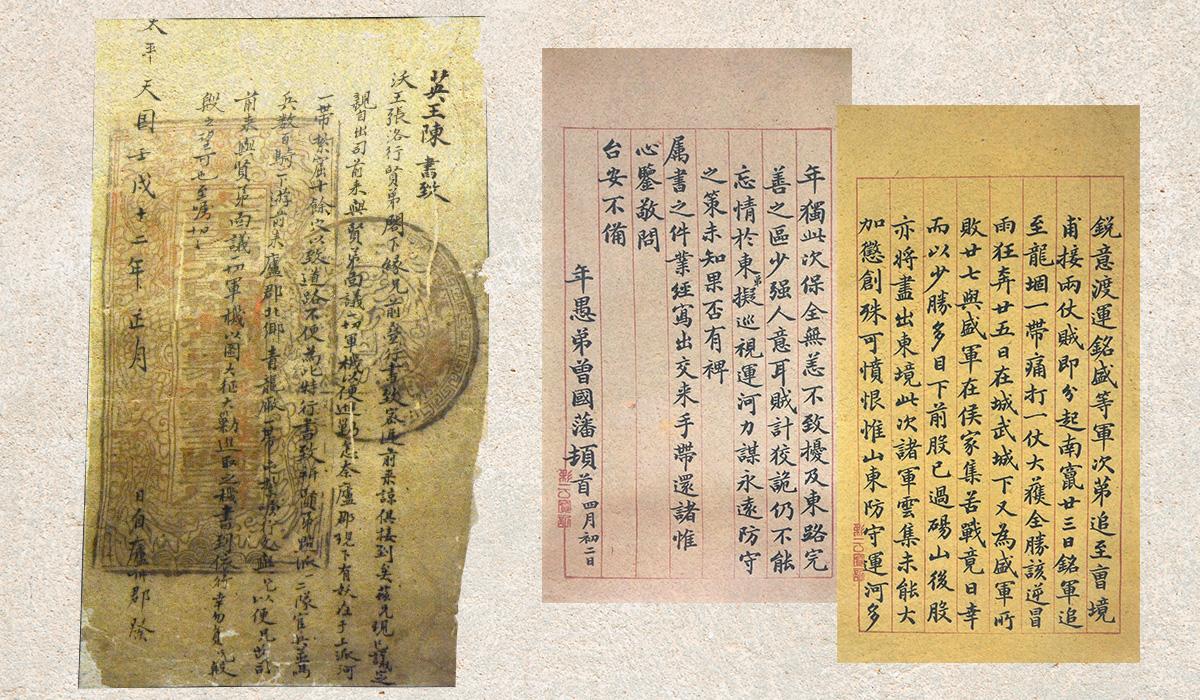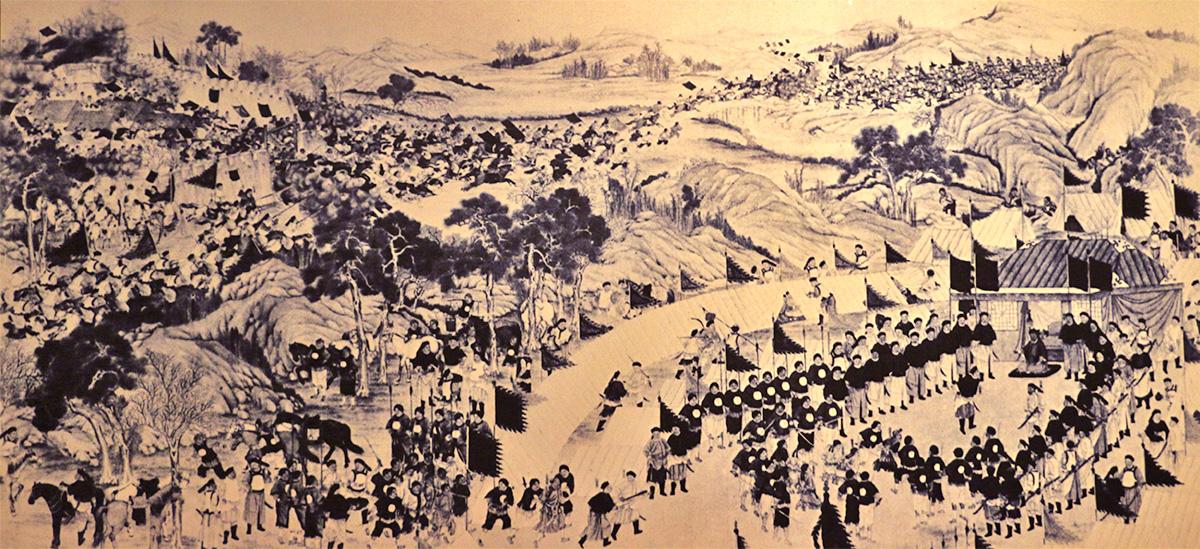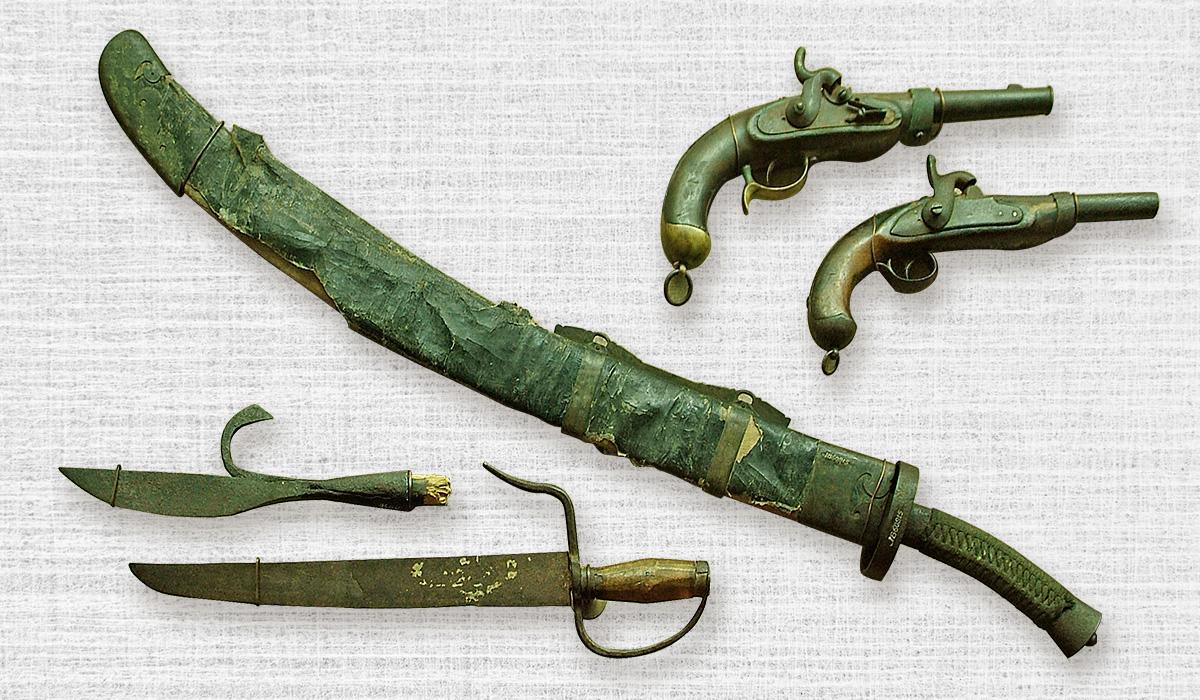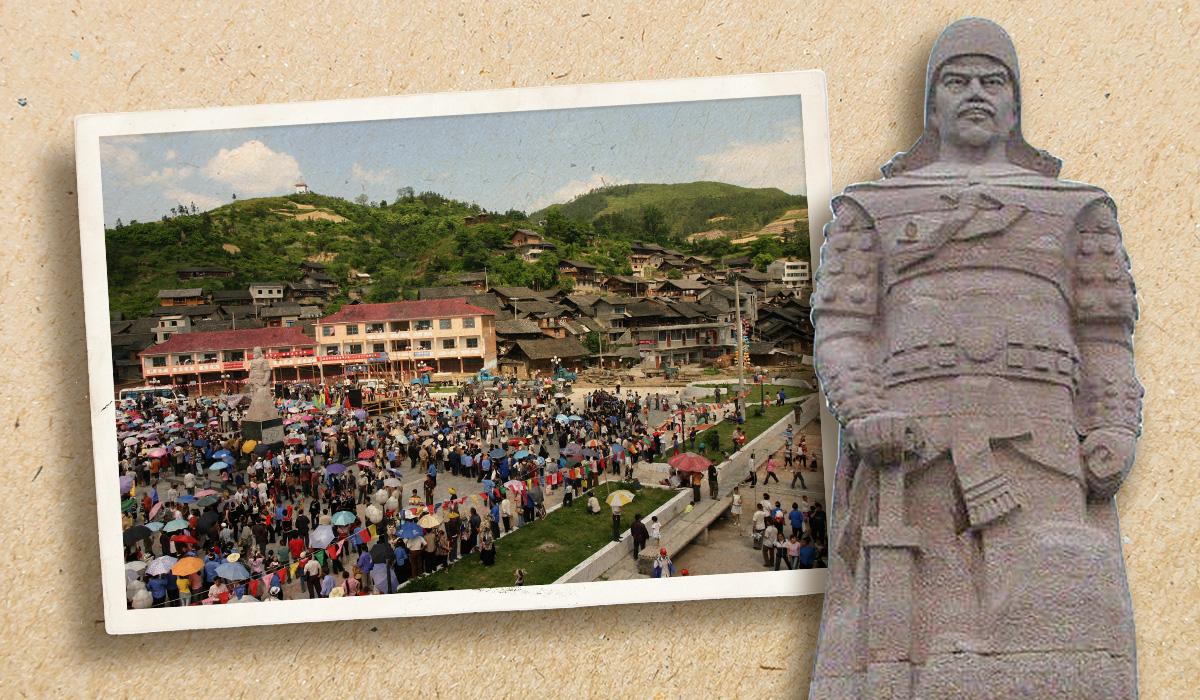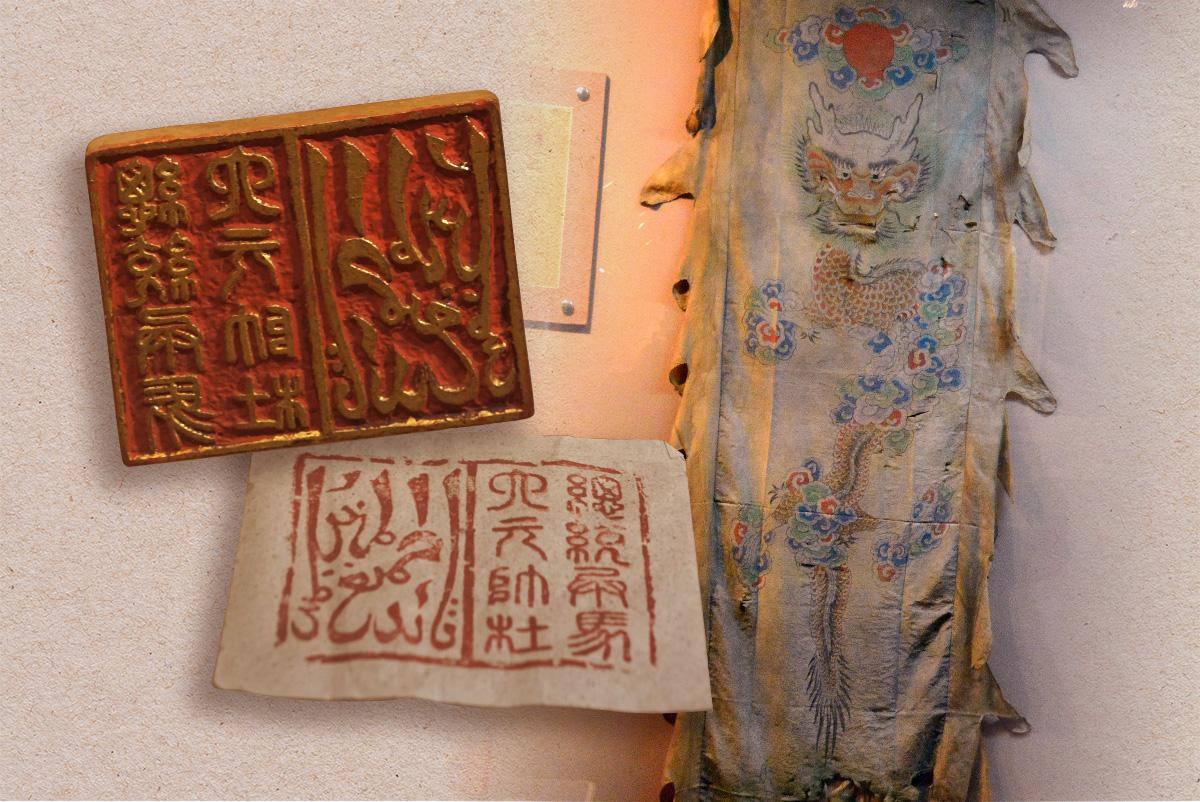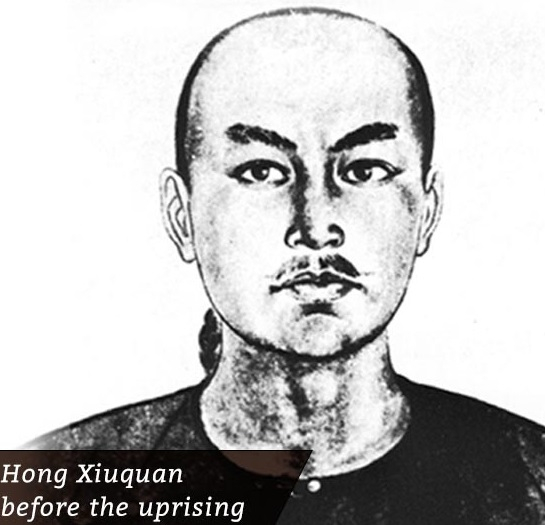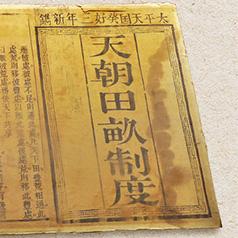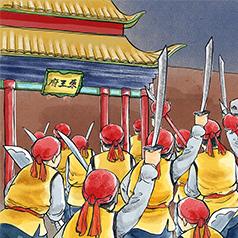The Taiping Rebellion stimulated many groups nationwide to revolt. Between 1853 and 1855, Shanghai was seized by the Small Swords Society (小刀會), an organisation led by Liu Liquan (劉麗川). In 1854, a group led by Chen Kai (陳開) and Li Wenmao (李文茂) revolted in Guangdong province (廣東), and established the Dacheng Kingdom (大成國, 1855-64) in Guangxi province (廣西) in the following year. In regions north of the Yangtze River, the banner of anti-Qing resistance was carried by the Nian rebels (捻軍).
After the fall of Tianjing (天京), remnants of the Taiping rebels continued their dogged resistance, with some joining forces with local insurrections. Among them, forces led by Li Shixian (李世賢) and Wang Haiyang (汪海洋), who were formerly the Heavenly Kingdom of Great Peace’s Shi King (侍王) and Kang King (康王) respectively, kept fighting in the provinces of Jiangxi (江西), Fujian (福建), and Guangdong till 1866. Li Wencai (李文彩) used to serve Shi Dakai (石達開), the Assistant King (翼王). He continued to wage wars in the provinces of Yunnan (雲南) and Guizhou (貴州) in the name of the Heavenly Kingdom of Great Peace until his death in battle in 1872.
Lai Wenguang (賴文光), formerly the Zun King (遵王) of the Heavenly Kingdom of Great Peace, joined forces with the Nian rebels. The Nian was originally formed by Zhang Lexing (張樂行, also called Zhang Luoxing, 張洛行). Its leadership was taken over by Zhang Zongyu (張宗禹) and Ren Huabang (任化邦) after Zhang Lexing had been captured and executed by the Qing general Sengge Rinchen (僧格林沁) in 1863. In 1865, the Nian rebels’ morale was soared by a crushing victory over the Qing army, killing Sengge Rinchen in combat. Later, the rebel forces split up into eastern and western factions. They were both suppressed by the Qing army in 1868.
Besides these parties, various ethnic groups in China also rebelled in succession. They included: the 1855 Miao people’s (苗族) anti-Qing revolt led by Zhang Xiumei (張秀眉) in Guizhou; the 1856 Hui people’s (回族) uprising led by Du Wenxiu (杜文秀) in Yunnan; the 1862 Hui people’s anti-Qing revolt in the provinces of Shaanxi (陝西) and Gansu (甘肅), and the 1864 Muslim anti-Qing revolt in Xinjiang (新疆). It was only after many years of warfare that the Qing army subdued these ethnic revolts one by one in the 1870s. In 1878, the Qing army successfully suppressed the last rebellion in Xinjiang, ending the 27-year internal strife that plagued China since the outbreak of the Taiping Rebellion in 1851.
|
|
What long-term impacts did the Taiping Rebellion and other revolts have on China? |
|
|
See answer below. |
The Taiping Rebellion stimulated many groups nationwide to revolt. Pictured on the left is Dianchuntang (點春堂) in Shanghai’s Yu Garden (豫園). It used to be the Small Swords Society rebels’ command centre in the northern part of Shanghai. Pictured on the right is the Proclamation to Secure Peace for the Masses issued by Li Wenmao, who called himself the Pingjing King (平靖王) of the Dacheng Kingdom. After the fall of the Heavenly Kingdom of Great Peace, anti-Qing revolts continued in various parts of the nation. The Qing government had great difficulties in dealing with all of them.
In 1853, Small Swords Society rebels led by Liu Lichuan captured Shanghai. To protect their interests in Shanghai, the foreign powers sided with the Qing government. Liu clashed many times with Qing and foreign soldiers before he was defeated and killed in 1855. In 1854, Chen Kai and Li Wenmao launched a revolt in Foshan (佛山), Guangdong, and established the Dacheng Kingdom in Xunzhou (潯州), Guangxi. There, Chen styled himself the Xun King (潯王) and Li styled himself the Pingjing King. In 1858, Li died shortly after sustaining a grave injury in a battle. In 1861, Chen was captured and killed by the Qing army. Despite their subjects’ continued resistance, the rebellion was crushed in 1864.
Even during the Taiping Rebellion, the Nian Rebellion had already been a threat to the Qing rule. Pictured on the left is a letter discussing military affairs from Chen Yucheng (陳玉成), the Heroic King (英王) of the Heavenly Kingdom of Great Peace, to Zhang Lexing, the Wo King (沃王), and leader of the Nian rebels. Pictured on the right is a personal letter written by Zeng Guofan (曾國藩) about the battles between the Qing army and the Nian rebels. After his capture of Tianjing, Zeng was entrusted with the task of suppressing the Nian Rebellion in 1865.
Established in 1851, the Nian rebels achieved numerous victories against the Qing army by using guerrilla strategy years followed. At one point, they were active in a region that spanned the provinces of Henan (河南), Anhui (安徽), Jiangsu (江蘇), and Shandong (山東). From 1853 onwards, the Nian rebels allied with the Taiping Army on some occasions. This earned Zhang Lexing the title of “Wo King” from the Heavenly Kingdom of Great Peace. In 1866, Zeng Guofan was dismissed for his failure to defeat the Nian rebels. He was succeeded by Li Hongzhang (李鴻章).
The Qing government’s depiction of the battle in which the Nian leader Zhang Lexing was defeated and captured. In 1863, he was captured and killed by the Qing general Sengge Rinchen. However, this did little to weaken the Nian rebels’ anti-Qing determination and fighting spirit.
The pictures show Sengge Rinchen, a renowned military general of the Qing dynasty, and the modern-day site of his mansion in Beijing. In 1865, the Nian rebels’ morale soared after a victory in which they killed Sengge Rinchen and annihilated his elite force.
Sengge Rinchen was a Qing prince and Mongolian noble with prowess in battles. The Qing government relied heavily on him. His key achievements were mainly in suppressing anti-Qing forces. In 1855, he annihilated the Taiping Rebellion’s northern expeditionary force, the rebels’ generals Lin Fengxiang (林鳳祥) and Li Kaifang (李開芳) were captured and killed. In 1855, he captured and executed the Nian rebels’ leader Zhang Lexing. In the following year, by luring Sengge Rinchen into a chase, the Nian rebels set a trap of encirclement. It ended up with the annihilation of over 7,000 men of Sengge Rinchen’s force and his own death, a defeat that stunned the Qing government. The loss of Sengge Rinchen and his elite force meant that the Qing government had no capable generals or warriors among the nobility. Thus, they had no choice but to rely more heavily on the Xiang Army (湘軍) and Huai Army (淮軍), and later the new Beiyang Army (北洋新軍) under Yuan Shikai (袁世凱).
Firearms and sabres used by the Nian rebels. From October 1866, the Nian rebels split into two factions, with Lai Wenguang and his followers leading the eastern faction, and Zhang Zongyu and his followers leading the western faction. In 1868, the eastern and western factions were crushed by the Qing army in succession. Lai was captured and killed while Zhang disappeared (some believe he drowned himself).
Long oppressed by the Manchus, the Miao people of Guizhou launched a massive revolt under the leadership of Zhang Xiumei in 1855. After the fall of the Heavenly Kingdom of Great Peace, the Qing army was able to deploy more troops to deal with the Miao rebellion. In 1872, Zhang was captured and killed. His followers continued fighting until 1874. Zhang’s legend was passed down via poems like Zhang Xiumei the Hero (《英雄張秀眉》). Pictured are a statue of Zhang Xiumei and the Zhang Xiumei Public Square (張秀眉廣場) in Taijiang County (台江縣), Qiandongnan Miao and Dong Autonomous Prefecture (黔東南苗族侗族自治州), Guizhou.
The Hui people of Yunnan, also oppressed by the Manchus, rose in rebellion under the leadership of Du Wenxiu in 1856. Pictured are the dragon banner and commander-in-chief’s seal used by Du.
On 17 October 1856, Du Wenxiu established a commander-in-chief’s mansion (pictured in photo) in Dali (大理), Yunnan. In 1867, the Hui army invaded Kunming (昆明), Yunnan. In response, the Qing government sent reinforcements and besieged Dali in 1872. In a bid to spare Dali’s people from a massacre, Du took poison before departing the city for peace negotiations at the Qing camp. There, he was killed by the Qing army. Later, the army rampaged through the city slaughtering the populace. In the following year, remnants of the Hui army in Yunnan were exterminated.
A statue of Zuo Zongtang (左宗棠) in Jiayuguan (嘉峪關), Gansu. In 1862, numerous Hui forces rose against the Qing government, a move that caught north-western China by surprise. In 1866, Zuo assumed the office of Viceroy of Shaan-Gan (陝甘總督) and led an army to suppress the rebellion. By 1873, Zuo subdued various Hui insurrections and was ready to deal with Xinjiang.
A Scene of Battle with the Hui Rebels to Retake Urumqi and other cities of Xinjiang (《克復新疆烏魯木齊等城回逆戰圖》) disseminated by the Qing government. From 1864 onwards, insurrections broke out in various regions in Xinjiang. Later, Yaqub Beg (阿古柏) united these forces under one banner and even obtained support from Britain and Russia. After suppressing the Hui rebellion in Shaanxi and Gansu, Zuo Zongtang’s forces moved on to Xinjiang and achieved a string of victories under the command of General Liu Jintang (劉錦棠). In May 1877, the Xinjiang rebellion crumbled after the sudden death of Yaqub Beg. In the following year, his remnants fled to Russia and the Qing government recovered Xinjiang in its entirety. To strengthen its control over Xinjiang, the Qing government turned it into a province in 1884 and appointed General Liu as its first governor.
From the beginning of the Taiping Rebellion in 1851 to the time the Qing government fully recovered Xinjiang, China endured 27 years of internal strife. The total death toll could not be ascertained, but some estimates put it at 50 million, 70 million, 80 million and even over 100 million, reflecting the magnitude of the turmoil that gripped China for 27 years.
|
|
What long-term impacts did the Taiping Rebellion and other revolts have on China? |
|
|
The Taiping Rebellion and additional revolts that happened during that period had important impacts on China. They can be summarised as follows: 1. It gave China the impetus to pursue the Self-Strengthening Movement. In suppressing the mass uprisings, the Qing government, and its newly rose military leaders such as Zeng Guofan, Li Hongzhang, and Zuo Zongtang relied heavily on Western weapons. They acknowledged the necessity of learning from the Western powers’ strengths, especially military strength. This made the Self-Strengthening Movement possible. 2. The rise of local powers: the Qing government’s use of militias raised by local Han officials and gentry to suppress the rebellions weakened central rule, giving local Han elites the opportunity to rise to power. Many generals who had served in the Xiang Army and Huai Army were later appointed as high-ranking local officials. Zeng Guofan, for example, served as the Viceroy of Zhili (直隸總督) and Viceroy of Liang-Jiang (兩江總督); Zuo Zongtang as the Viceroy of Shaan-Gan and Viceroy of Liang Jiang; and Li Hongzhang as the Viceroy of Zhili and Viceroy of Liang-Guang (兩廣總督). Their reputation and power were far greater than preceding viceroys. From that time onwards, powerful local officials could even disobey orders from the Qing government on some key occasions. For example, during the Boxer Rebellion and the invasion of Eight-Nation Alliance (八國聯軍) in 1900, the south-eastern provinces’ viceroys refused to obey the Qing government’s order of fighting against the invaders. They even made the pact of “Mutual Protection of Southeast China (東南互保)” with the foreigners. Participants in the pact included Viceroy of Huguang (湖廣總督), Zhang Zidong (張之洞), Viceroy of Liang Guang, Li Hongzhang, and Governor of Shandong (山東巡撫), Yuan Shikai. Meanwhile, locally raised militias like the Xiang Army and Huai Army inspired the government to promote the recruitment and training of local armies during the late Qing period. However, the government could not control these local militias effectively. Some of the newly formed armies even participated in the anti-Qing revolution. For example, in 1911, the Wuchang Uprising (武昌起義) was sparked off by the New Army of Hubei (湖北新軍). Later, after establishing the Republic of China, the government inherited this situation and was unable to control those provincial powers. It resulted in China being carved up by warlords. 3. Anti-Qing sentiments spread far and wide: the Taiping Rebellion, in particular, served as a revolutionary inspiration for Sun Yat-sen (孫中山) and his followers whose efforts would later topple the Qing regime. |
Source of most photos used in this feature piece: Fotoe




